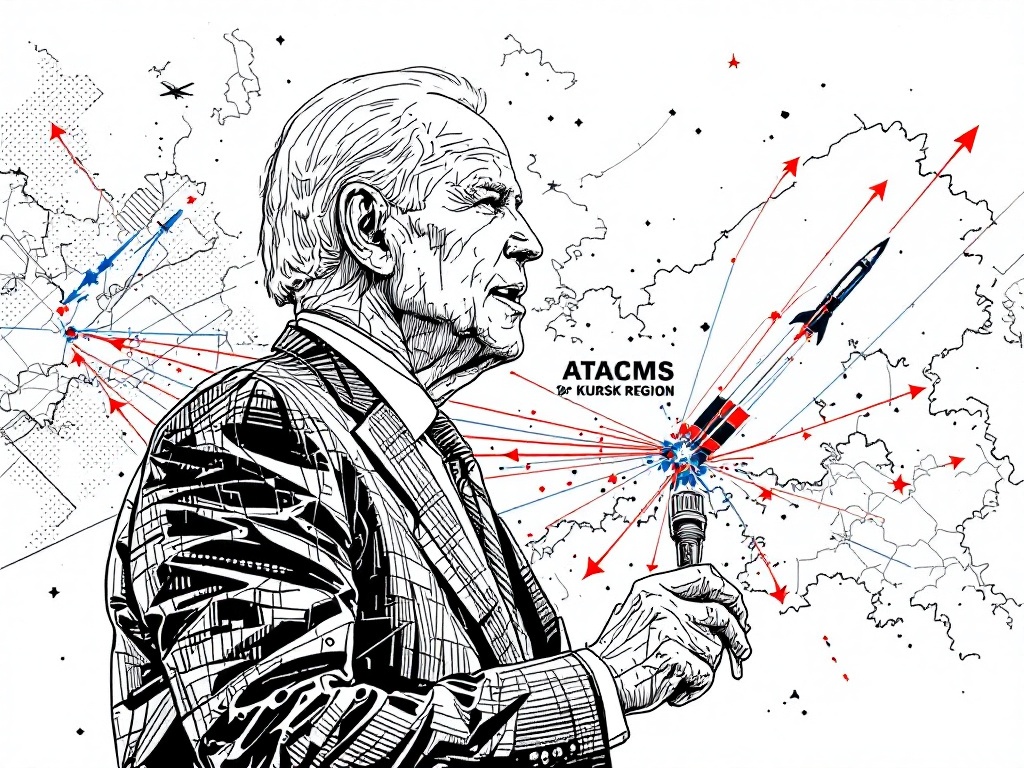Biden's Game-Changing Move: Ukraine Gets Green Light for ATACMS Strikes in Russia

Kursk, Monday, 18 November 2024.
In a dramatic shift in U.S. military policy, President Biden has authorized Ukraine to use ATACMS missiles within Russian territory. This decision, prompted by North Korea’s deployment of 10,000 troops to support Russia, marks a crucial turning point in the conflict. The long-range missiles, capable of striking targets up to 300 kilometers away, will initially target Russian and North Korean forces in the Kursk region. This authorization comes just two months before Biden leaves office, raising questions about future U.S. military support under President-elect Trump. While military experts suggest limited tactical impact, the diplomatic implications could pressure Moscow toward peace talks.
A Strategic Shift Amidst Escalating Tensions
The decision to allow Ukraine to utilize the MGM-140 Army Tactical Missile System (ATACMS) within Russian territory represents a notable pivot in U.S. foreign policy. Historically, the U.S. had been hesitant to provide such advanced weaponry due to fears of escalating the conflict. However, the unexpected involvement of North Korean troops, numbering around 10,000, in support of Russian forces in the Kursk region has catalyzed this policy change. U.S. officials confirmed that the deployment of ATACMS aims to disrupt Russian and North Korean military operations, potentially altering the strategic landscape in this volatile area.[1][2]
Political Reactions and Future Implications
As President Biden’s term approaches its conclusion, this authorization has sparked significant political discourse. Critics, including allies of President-elect Donald Trump, argue that this move could exacerbate tensions and potentially widen the conflict. Representative Marjorie Taylor Greene expressed concerns about the possibility of World War III, suggesting that Biden’s decision could lead to greater U.S. involvement in foreign wars. Conversely, Ukrainian leaders, such as President Volodymyr Zelensky, have welcomed the decision, emphasizing the strategic necessity of these missiles in countering Russian aggression.[3][4]
Military and Diplomatic Ramifications
While the deployment of ATACMS is seen as a tactical advantage for Ukraine, its broader implications lie in the diplomatic arena. Some experts believe that by increasing military pressure on Russia, the U.S. might push Moscow towards peace negotiations. The potential destruction of significant Russian military assets could alter the balance of power, compelling President Vladimir Putin to reconsider his position. However, the limited number of missiles and their relatively short range might restrict their effectiveness to localized engagements in Kursk, rather than broader strategic victories.[5][6]
Looking Ahead: U.S. Policy Under Trump
With President-elect Trump set to take office in January 2025, questions loom over the continuity of U.S. military support for Ukraine. Trump’s campaign promises have included a pledge to de-escalate the conflict, contrasting with Biden’s recent actions. As global leaders and military analysts watch closely, the future of U.S. involvement in the Ukraine-Russia war remains uncertain. The current administration’s decision has undoubtedly set a new precedent, but its long-term effects will hinge on the policies of the incoming leadership and the evolving geopolitical dynamics.[7][8]